By Apple Computer
|
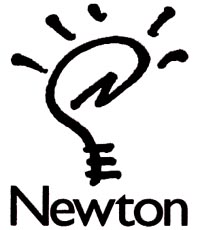
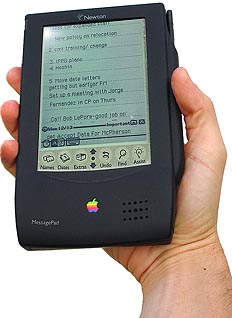
Earlier, albiet simpler, PDAs have existed as far back as 1984, with perhaps the first being the Psion Organiser.
A Newton is best described as a handheld communications assistant with a touch-screen and pen-stylus that allows the user to gather, manage, and share information.
Included applications are "Notes", "Names", and "Dates", as well as simple tools such as a Calculator, Currency Converter, Time-Zones Maps, and more.
With "Notes", the default application, you can write small documents, in your own handwriting, as well as draw free-hand sketches. Yes, the Newton can translate your personal handwriting into computer text which can be saved, printed, or transferred to other computer systems.
"Names" is a contact database, and "Dates" is a personal calendar for scheduling your time and days.
The built-in handwriting recognition is the Newton's most unique and interesting ability, being able to interpret the user's handwriting (hand-printing as well as script) into computer-readable text. But as is often the case with early versions of complicated systems, the original Newton gives mixed results and is often inaccurate.
The "Newton Connection Kit" includes a serial cable to attach to other computer systems, be they Mac or Windows, to synchronize, transfer files, restore Newton and install software onto a Newton.
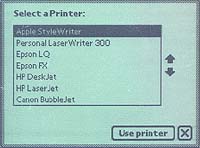
 The "Newton Print Pack" is a special printer-cable which plugs into the Newton serial port, allowing you
to print to a wide assortment of printers, including ink-jet, laser, dor-matrix, and
thermal printers. The remarkable thing is that it is a "smart" serial-to-parallel adapter cable,
with the printer driver software built right into the cable connector.
The "Newton Print Pack" is a special printer-cable which plugs into the Newton serial port, allowing you
to print to a wide assortment of printers, including ink-jet, laser, dor-matrix, and
thermal printers. The remarkable thing is that it is a "smart" serial-to-parallel adapter cable,
with the printer driver software built right into the cable connector.
The Newton supports type-II PCMCIA expansion cards, including 1MB, 2MB, and 4MB flash storage cards. The 4MB card will store up to 250 personal contacts, 200 notes, 500 calendar appointments, and 35 screens of text and drawings.
The Newton is not the first device with a touch-screen and handwriting recognition, though. The Linus Write-Top incorporated both six years earlier in 1987, but the user has to train the Write-Top before it will recognize their handwriting.
Unfortunately, at about 4.5 x 7 inches, and almost one inch thick, the Newton is really too large and heavy (almost one pound) to be considered pocket-size.
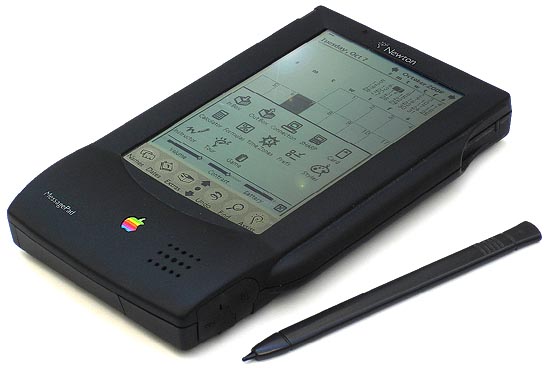
Subsequent versions of the Newton eventually improved the accuracy of the handwriting recognition to a point where it was actually quite useful, and while increasingly popular and useful, the Newton was never a great success for Apple, who terminated the entire Newton line five years later in 1998.
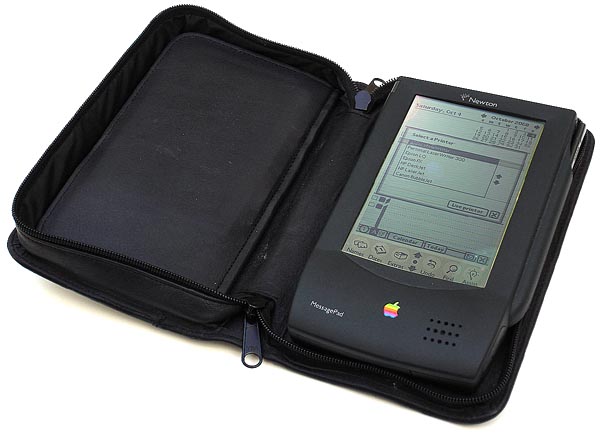
An interesting technology, but the tiny keyboards in use today on the BlackBerry, the Apple iPhone, and other similar devices, are many times more efficient and accurate than any pen-based device could ever be.
The non-backlit LCD screen, like most, has poor contrast and is difficult to read.
|
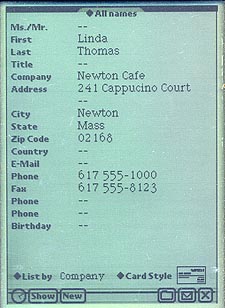
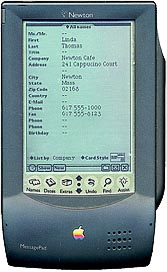
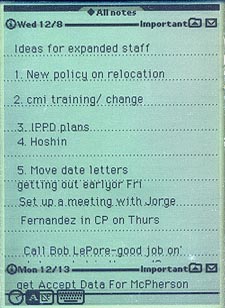
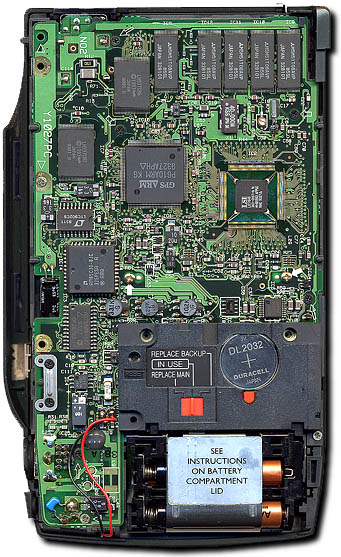
Return to the Obsolete Technology Homepage
This page last updated on 05/08/2016 01:07:51
All logos and trademarks on this site are property of their respective owner.